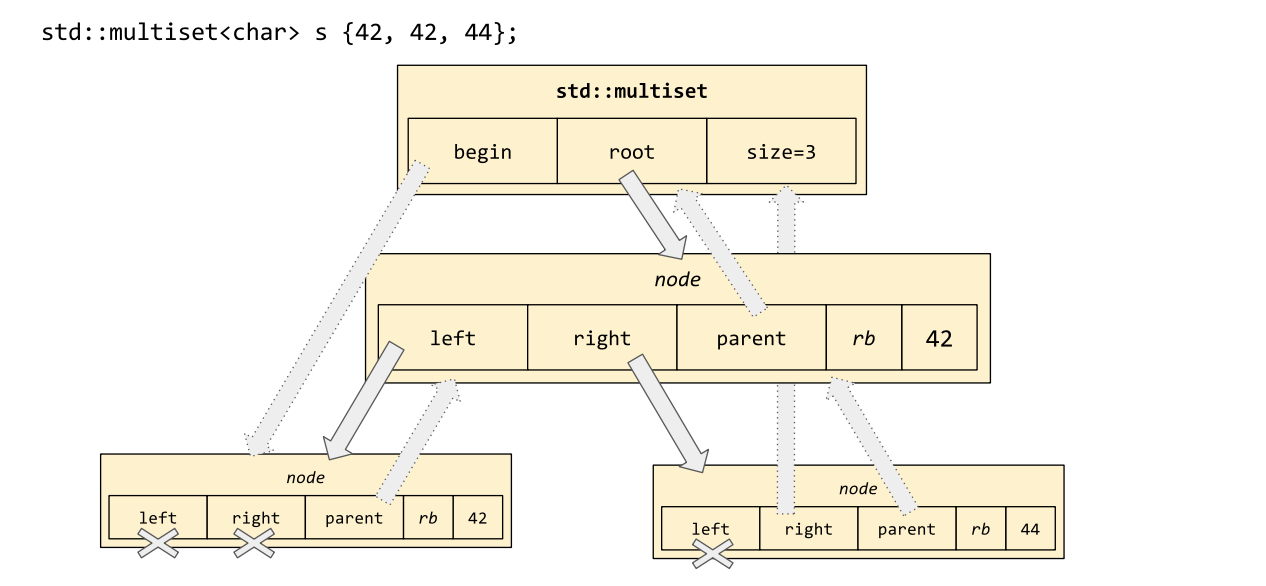Oddballs: std::multiset<T> and std::multimap<K, V>
In STL-speak, a "set" is an ordered, deduplicated collection of elements. So naturally, a "multiset" is an ordered, non-deduplicated collection of elements! Its memory layout is exactly the same as the layout of std::set; only its invariants are different. Notice in the following diagram that std::multiset allows two elements with value 42:

std::multiset<T, Cmp> behaves just like std::set<T, Cmp>, except that it can store duplicate elements. The same goes for std::multimap<K, V, Cmp>:
std::multimap<std::string, std::string> mm;
mm.emplace("hello", "world");
mm.emplace("quick", "brown");
mm.emplace("hello", "dolly");
assert(mm.size() == 3);
// Key-value pairs are stored in sorted order.
// Pairs with identical keys are guaranteed to be
// stored in the order in which they were inserted.
auto it = mm.begin();
using Pair = decltype(mm)::value_type;
assert(*(it++...



































































